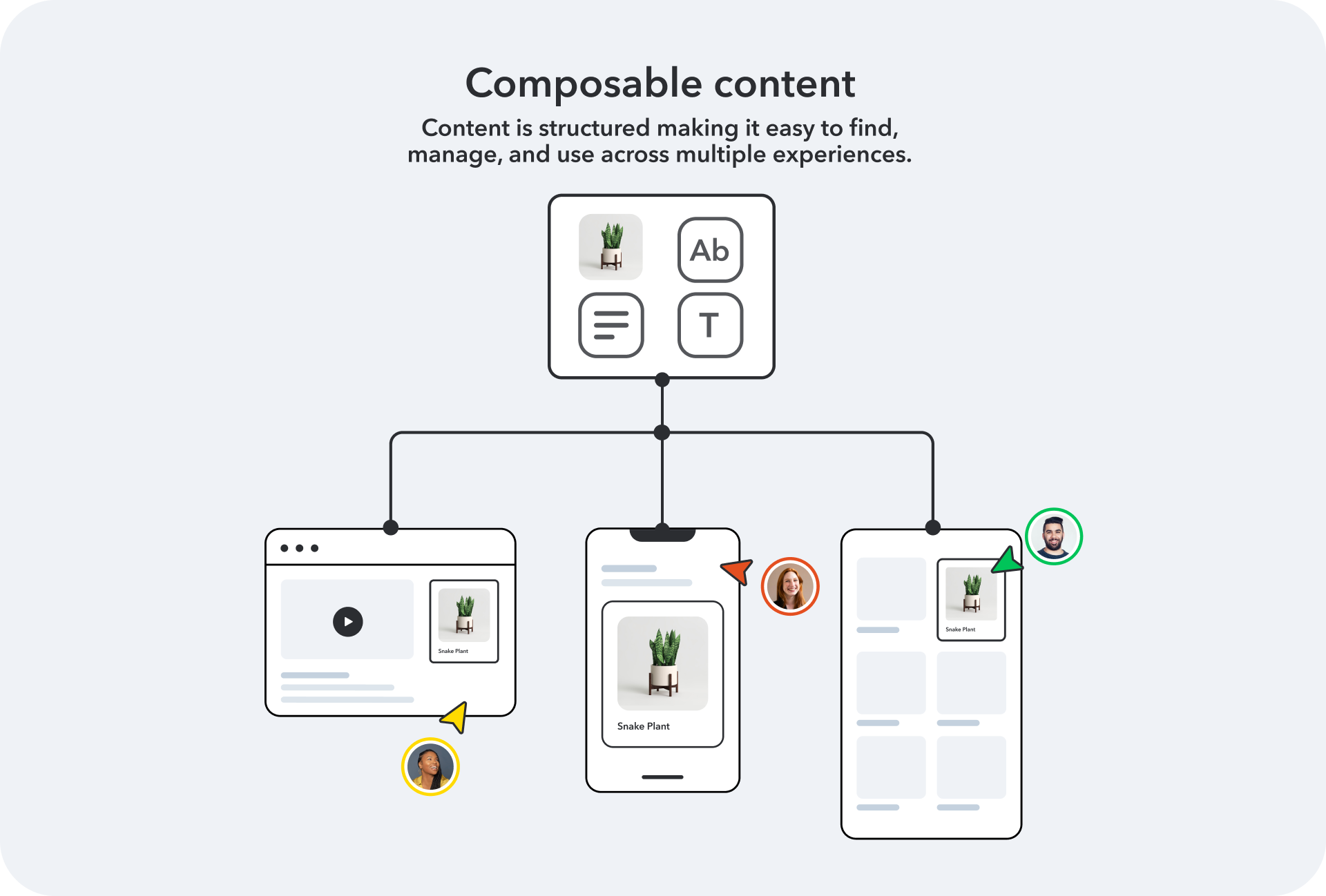
The Composable Content guide
What is a composable CMS?

Lisa Lozeau
Updated: November 20, 2024

The Composable Content guide
- 1. What is Composable content?
- 2. What is composable architecture?
- 3. Composable vs headless
- 4. What is a composable CMS?
- 5. From composable content to composable commerce
- 6. Composable content for marketers
- 7. Composable content for developers
- 8. How composable content is transforming digital experiences across industries
This is chapter 4 of the series, The Composable Content Guide
Summary
Composable CMS is one of several terms used to describe the combination of composable content and composable architecture.
As content management solutions evolve from headless to composable, people are grappling with how to differentiate a headless CMS from newer solutions that offer the greater functionality of a composable content management system.
In this chapter, we’ll talk about some of the terms you might see, and recap the key features to look for if you want a truly composable CMS.
“Composable CMS” and “composable content platform” both describe composable content management solutions

When you’re looking for a composable content management system, the terminology can be a little confusing. Composable CMS is one of several terms people use to describe a composable approach.
A composable CMS can also be accurately called a headless CMS, or it might be one capability within a larger composable architecture.
At Contentful, we use the term composable content platform, but people also refer to the Contentful Composable Content Platform as a headless CMS, or a composable CMS.
No matter what you call it, it boils down to what the solution enables you to do. This is especially important as legacy content management systems add on services in an effort to become more like a composable CMS. They might loosely meet the definition of composable architecture, but they often fall short of the benefits an API-first, cloud-native solution will provide.
What to look for in a composable CMS
Regardless of what the product is called, if you want the capabilities of a composable CMS, considering the key principles of composable content is a good place to start.
Six principles of composable content to look for in a composable CMS
1. Designs for reuse. A composable CMS enables you to reuse content, models, assemblies, apps, and architectures across digital experiences, brands, and regions.
2. Uses structured content. Structured content enables people and machines (think AI-based applications) to use and reuse content more efficiently.
3. Connects content sources. A composable CMS connects and unifies content from other databases, such as your DAM, PIM, CRM, and commerce system.
4. Usable across channels. With a composable CMS, teams can deliver content to any digital channel, including digital billboards and voice applications like Alexa Skills. Content be customized to each channel and enhanced with personalization.
5. Enables independent work. Composable allows content creators and developers to work in parallel. Content teams and marketers are empowered to build and deliver experiences without waiting in a developer queue.
6. Keeps teams coordinated. Strong governance features, custom interfaces, and clear workflows support the complexities of multiple teams working across channels, regions, and brands. These should include content and design guardrails so your message and visual brand are always consistent.
In the market for a new CMS? Check out our full guide to choosing a CMS.
A composable CMS should offer the benefits of composable content and composable architecture
We might be biased, since the Contentful Composable Content Platform meets all of the above criteria, but we designed our product to provide the full benefits of composable content and composable architecture. And we think that’s what a composable CMS, by any name, should do.
A composable content solution, should provide brands with the following benefits:
-
Reliable content management and the ability to connect content across environments, including content in other CMSes.
-
Laser-focused messaging consistency across experiences, combined with the ability to create distinctive, personalized experiences on any channel.
-
Streamlined content operations with less reliance on developers for day-to-day content creation and publishing.
-
The best tools for each function with no restrictions or vendor bias on which tools can be integrated into your tech stack.
-
Modular everything so you can update individual tools without disrupting the whole system.
-
The ability to do something bigger and better by connecting content with specialized applications that empower teams to work differently and unleash their creativity.
Eager to get started? Contact us today.
Up Next: Composable commerce
Understand how composable commerce gives brands a competitive advantage, and learn how to start building a scalable, future-ready commerce system.
Written by

Lisa Lozeau
Lisa Lozeau is an expert in content strategy, content creation, and content marketing, where she has utilized these skills as a writer at Contentful for over 6 years. She has led marketing programs across several industries on a variety of platforms. Well-versed in the limitations of traditional CMSes, she is passionate about innovative solutions.
